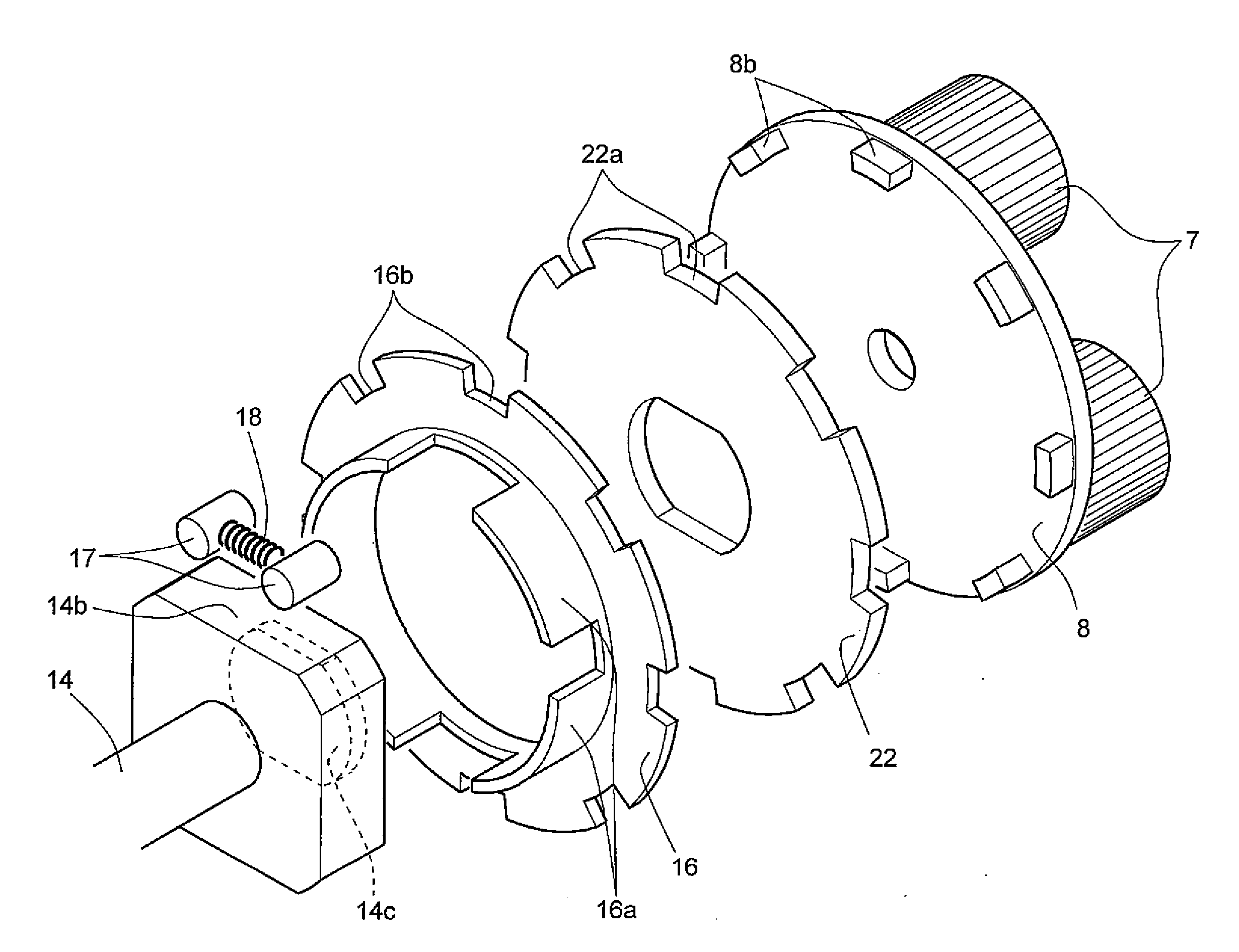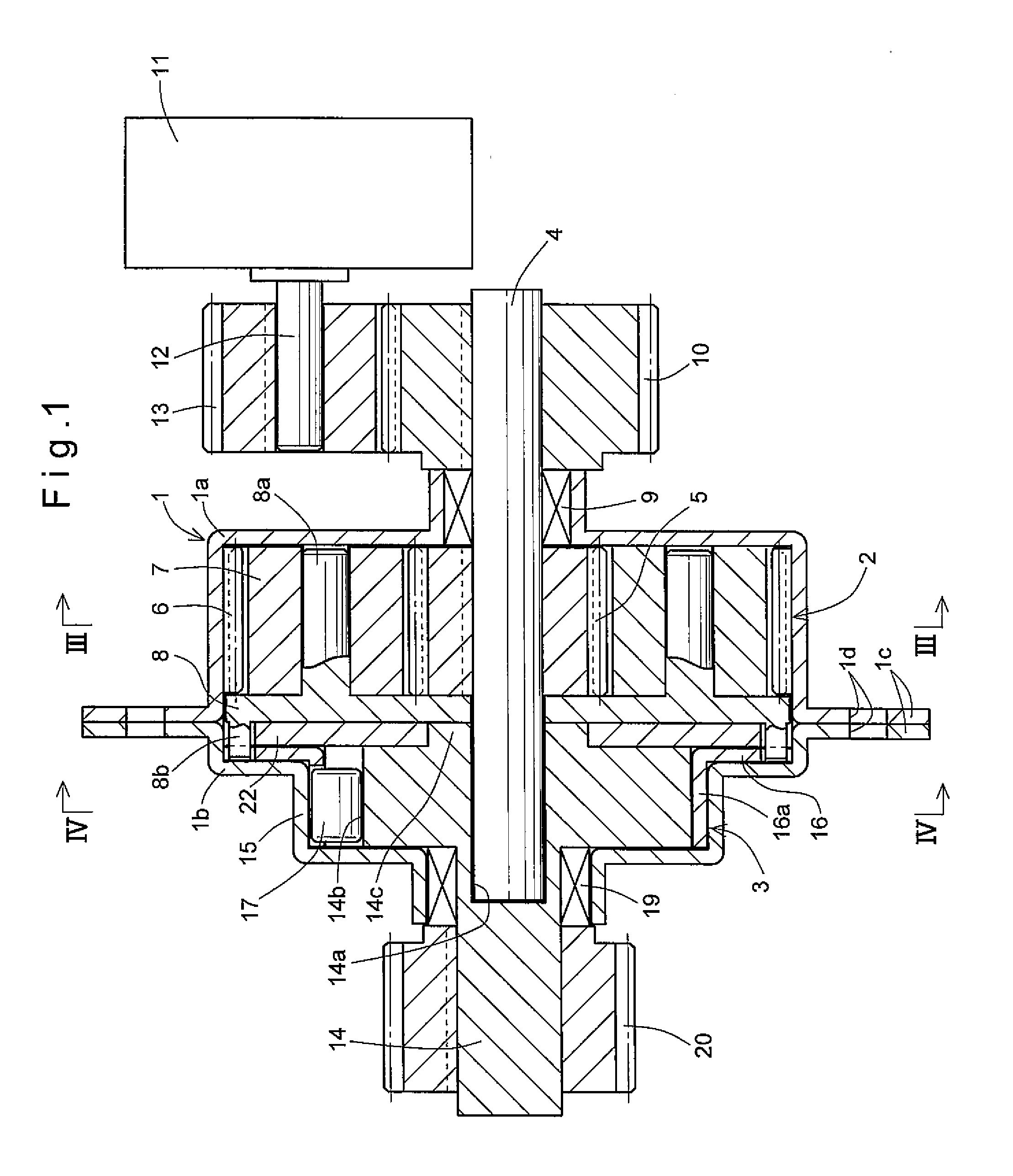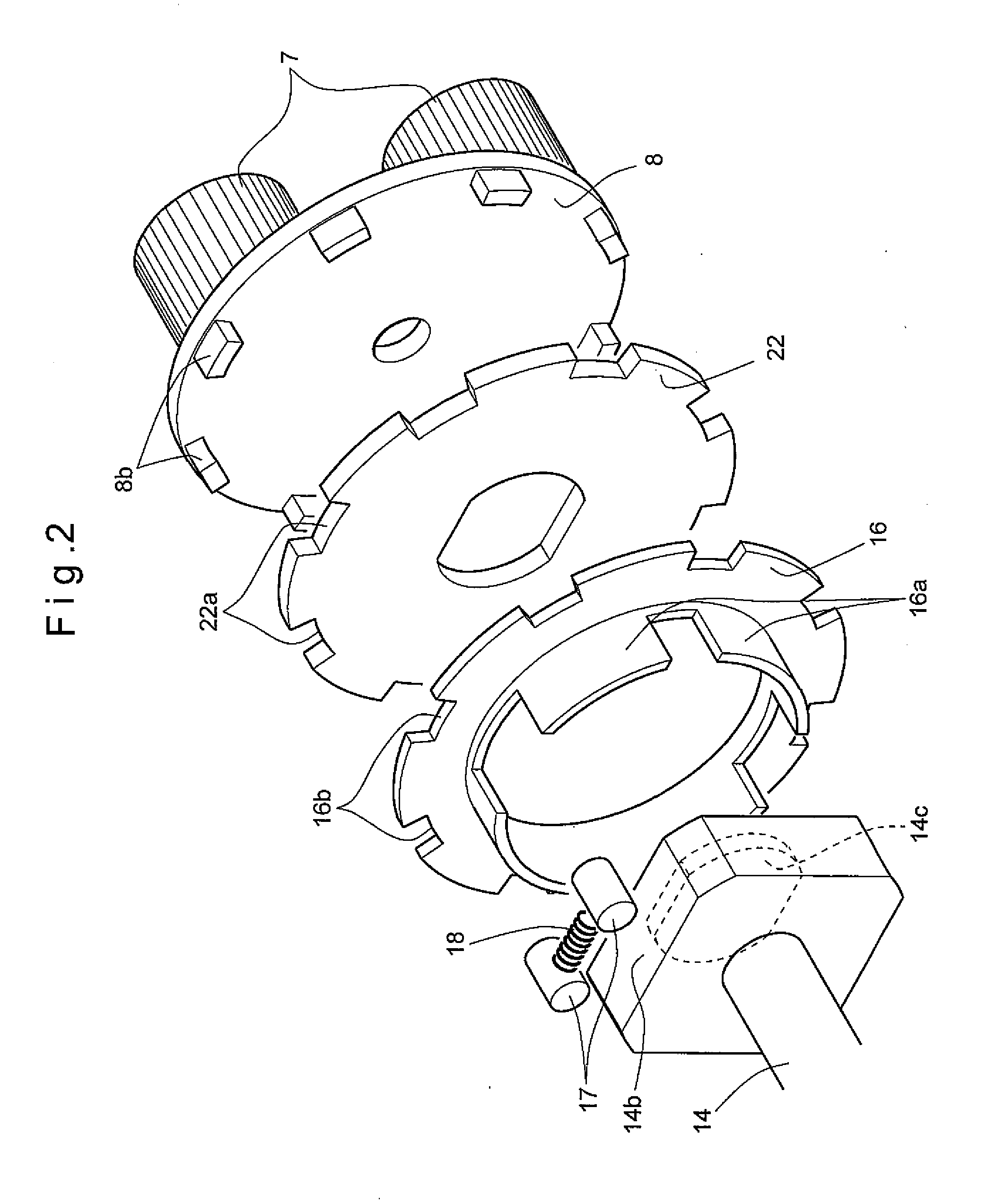Speed reducer with a brake
a technology of speed reducer and brake, which is applied in the direction of brake system, manufacturing tools, gearing, etc., can solve the problems of troublesome assembly of the device and large electric power consumption of the device, and achieve the effect of less electric power and easy assembly
- Summary
- Abstract
- Description
- Claims
- Application Information
AI Technical Summary
Benefits of technology
Problems solved by technology
Method used
Image
Examples
first embodiment
[0069]The second planetary gear mechanism 41 comprises a second input shaft 42 rotatably extending through the first input shaft 32 of the first planetary gear mechanism 31; a second sun gear 43 integral with a portion of the second input shaft 42 protruding from the one end of the first input shaft 32; a second internal gear 44 integral with the first internal gear 34 and disposed radially outwardly of the second sun gear 43; a plurality of second planetary gears 45 each meshing with both the second sun gear 43 and the second internal gear 44; and a second carrier 46 including support shaft 46a extending through the centers of the respective second planetary gears 45, and supporting the second planetary gears 45 so as to be rotatable about their own axes. As with the carrier 8 of the first embodiment, the second carrier 46 is provided with a plurality of protrusions 46b through which rotation is transmitted to the reverse input shutoff mechanism 3.
[0070]As with the input shaft 4 of...
second embodiment
[0073]In the second embodiment, by use of the differential reduction mechanism 23, an extremely high reduction rate is achievable utilizing the difference in rotational speed between the first input shaft 32 and the second input shaft 42. Moreover, since the planetary gear mechanisms 31 and 41 are identical in gear structure, gears of the respective planetary gear mechanisms 31 and 41 can be designed efficiently, and their parts can be manufactured efficiently too.
[0074]A disk-shaped manual operating member 30 is fixedly fitted on the outer periphery of a portion of the drive shaft 27, as the input member of the reduction mechanism 23, that protrudes from the housing front half portion 1a so that, if necessary, the position (attitude) of the driven member can be changed by turning the manual operating member 30 while the driving motor 11 is not being driven, such as during maintenance. In an alternative arrangement shown by the one-dot chain line in FIG. 12, the shaft 12 of the driv...
fourth embodiment
[0083]In the fourth embodiment, as shown in FIG. 14, the driving motor 11 is mounted in a front half portion 71a of a housing 71 having no steps on the outer peripheral surface, and the reduction mechanism 23 and the reverse input shutoff mechanism 3 are mounted in a rear half portion 71b of the housing 71. The housing front half portion 71a includes an inner tubular portion 71c extending axially inwardly from the center of the lid portion of the housing front half portion 71a. The output end portion of the housing rear half portion 71b is formed separately from the remaining portion of the housing rear half portion 71b, and serves as the fixed outer ring 15 of the reverse input shutoff mechanism 3. The first planetary gear mechanism 31 and the second planetary gear mechanism 41 of the reduction mechanism 23 has a common input shaft 72, and the output portion of the reverse input shutoff mechanism 3 is divided into a cam member 73 opposed to the inner peripheral surface of the fixed...
PUM
 Login to View More
Login to View More Abstract
Description
Claims
Application Information
 Login to View More
Login to View More - R&D
- Intellectual Property
- Life Sciences
- Materials
- Tech Scout
- Unparalleled Data Quality
- Higher Quality Content
- 60% Fewer Hallucinations
Browse by: Latest US Patents, China's latest patents, Technical Efficacy Thesaurus, Application Domain, Technology Topic, Popular Technical Reports.
© 2025 PatSnap. All rights reserved.Legal|Privacy policy|Modern Slavery Act Transparency Statement|Sitemap|About US| Contact US: help@patsnap.com



